Implants & Instruments
Dr. Ramani during his career invented and developed several implants and instruments to make spinal surgery user friendly for the surgeons. It is heartening to note that his instrumentation is being popularly used all over India and abroad particularly third world countries. The metal used in them has changed with time and now the implants are used using titanium metal. Attempt now is to make instrumentation invisible for X-rays so that it does not interfere with imaging of the portion of the spine with implants.
1: Micro lumbar retractor

Very useful for doing micro lumbar discectomy the state of the art treatment for a given patient with lumbar disc herniation . It is being used by all doing the procedure. It is approved by World Federation of Neurosurgical societies and it can be seen on their website. Over a period of time Dr. Ramani has added several more new blades with different sizes so that it can be used with comfort on any patient however overweight he is. When one has to operate in a depth there was always the problem of acess which is now solved. A very useful device in dy to day common surgery.
2: Cervical micro discectomy retractor

The operative procedure became popular later after the success of micro lumbar discectomy. Dr. Ramani is one of the proponents of posterior cervical micro discectomy. The neck is thin in comparison to flank and lumbar micro retractor is too heavy for the neck. Hence a separate retractor with delicate and shorter sizes of blades with shorter width have been developed for use on the posterior surface of cervical spine.
3: Set of micro osteotomes

There was a lacuna in instrumentation and for doing micro surgery one required micro osteotomes to chisel off the bone under microscope. A set of micro osteotomes made from standard steel were developed ranging from 2 mm onwards both straight and curved. They are buffed so that the osteotome does not shine under the microscope light. The set consisting of several osteotomes of different sizes are now easily available in the operation theatre. They are most useful to osteotomise the hanging edge of vertebral in micro lumbar discectomy].
4: Micro 2 mm disc rongeur

The need was to have a micro disc rongeur with short cup, sturdy and sharp so that it does not easily break or bend or become loose at the joint. Available rongeurs wee long delicate with delicate joint and broke very easily. The present instrument being sturdy has stood the test of time and works beautifully. A must instrument for everyone doing micro lumbar discectomy.
5: Cervical round Fuzer cages

Made in titanium metal they are serrated and manufactured in 2 different sizes by GESCO surgical company from Chennai. Meant for use in anterior cervical fusion it avoids another operation on the iliac crest to obtain bone graft and it has enough space inside to contain cancellous chip bone grafts and has enough perforations for quick osteosynthesis. It is stand along cage tested biomechanically and does not require the use of cervical plate in one level fusion. It also carries instrument set to do the procedure of insertion of cage in the disc space. Very convenient to use and the settlement of the disc space at the end of two years is not significant.
6: Cervical Octo cages
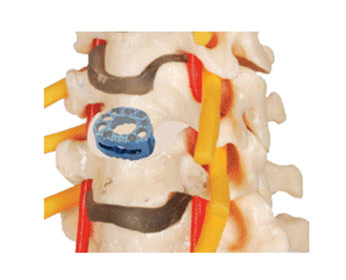

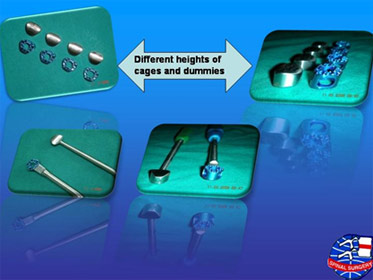

Made in titanium metal they are serrated and manufactured in 2 different sizes by GESCO surgical company from Chennai. Meant for use in anterior cervical fusion it avoids another operation on the iliac crest to obtain bone graft and it has enough space inside to contain cancellous chip bone grafts and has enough perforations for quick osteosynthesis. It is stand along cage tested biomechanically and does not require the use of cervical plate in one level fusion. It also carries instrument set to do the procedure of insertion of cage in the disc space. Very convenient to use and the settlement of the disc space at the end of two years is not significant.
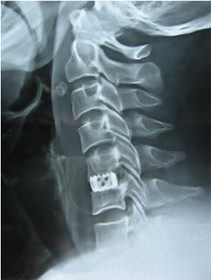
7: Round cages for lumbar interbody fusion
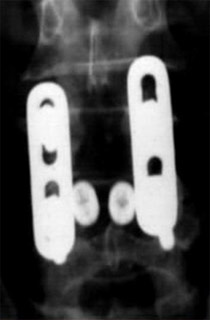
These were manufactured with the surge of instrumented PLIF in the world. Manufactures along Ray design which were first cages to be introduced in the world. One cage on each side the construct was satisfactory. The operating time was shortened and it was easy to introduce once the bed was prepared with the help of a set of instruments required for its introduction. Made in stainless stel metal they were later replaced with titanium cages.
8: Square lumbar interbody fusion cages for posterior lumbar interbody fusion
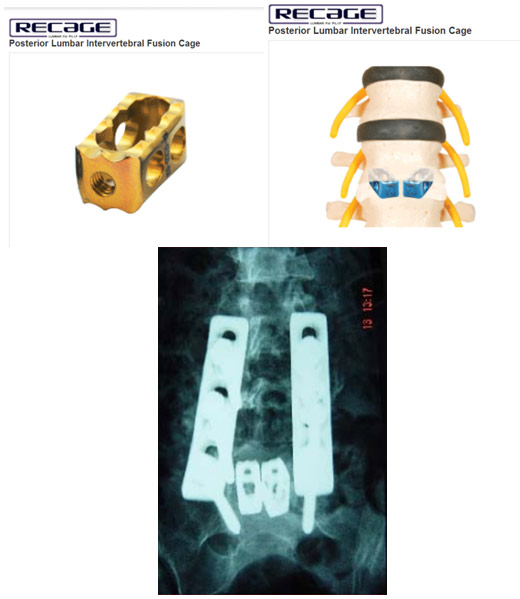
After the success of round cages for better fit and better contact area with the surface of vertebrae the round cages were replaced with square cages. They worked well and were fitting snuggly and caused good bony fusion. Stability was good and radiological results at the end of two years were very satisfactory. Originally made in stainless stel metal very soon the metal was replaced with titanium to facilitate better MRI imaging.
9: Vertebral replacement cages
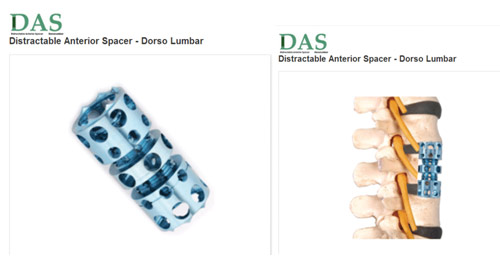
These were mainly manufactured in response to a vast number of cases with trauma to the DL region of the spine that Dr. Ramani was obliged to operate. Many times the vertebral body was crushed and required to be replaced. It was made hollow and filled with cancellous auto bone for quick bony fusion once the spine was stabilized. They worked well and helped to quickly stabilize the spine for better rehabilitation of the patient.
10: Spinal Surgery Instrument Set

As Chairman of Spine Committee of World Federation of Neurosurgical Societies I felt concerned about the needs of developing countries in the programme for development of Spinal Surgery in their countries. The main problem was instrumentation and in response to such needs the set was prepared so that it contained all the standard instruments required to do spinal surgery. The set is being donated to several countries . The set is once again compiled by GESCO Surgical company in Chennai.
11: Artificial cervical disc
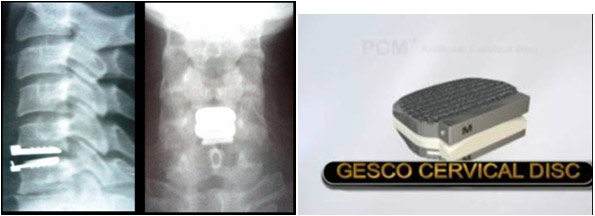
At one time the enthusiasm for this implant was quite high in India. The available implants were very expensive and Dr. Ramani developed this implant to meet the need. It was used well and gave good results without any complications. But after a few years the enthusiasm for artificial disc diminished significantly and hence this implant did not flourish like other implants. The long term follow up results are not available.
12: Expandable cervical corpectomy cages


These were developed at a time when cervical vertebral body excision became popular. For 1-2 level vertebral body excision, Dr Ramani developed these expandable cages whch could be fixed comfortably in the space available after corpectomy and then expanded until its teeth pierced the vertebral surfaces and was fixed snuggly. There was no fear of derotation once the cage was fixed but all the same, an anchoring screw in to the rotating ring provided further security once the screw was tightened. It has stood well without the cervical plate and long term results have not shown any kyphotic deformity or settlement of the disc.
